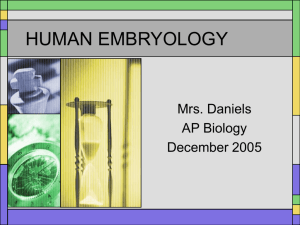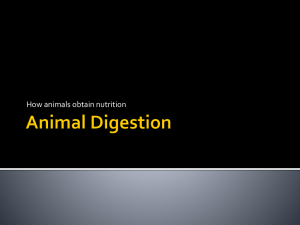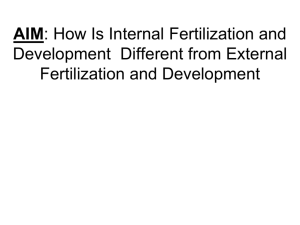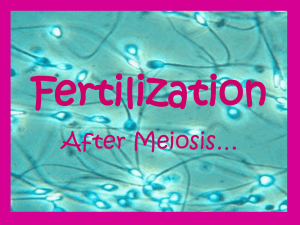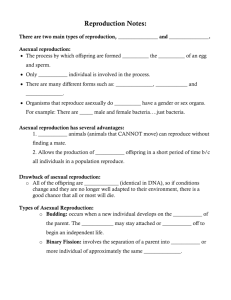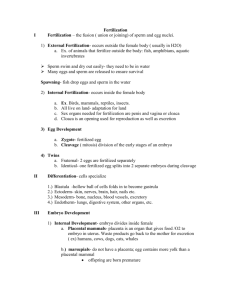Sexual Reproduction
advertisement
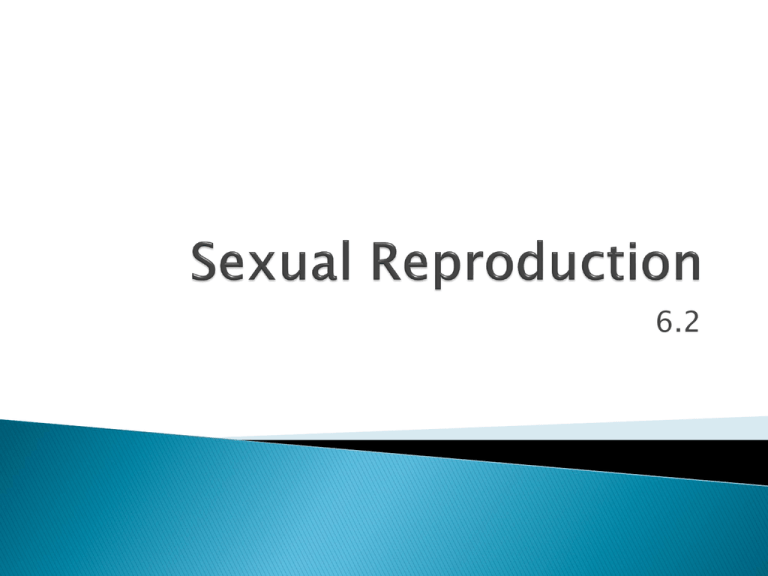
6.2 Sperm and Egg cell unite outside of the bodies of the parents. If a sperm cell comes in contact with an egg cell of the species, fertilization may occur. Fertilized eggs not protected External Sperm cells are deposited inside the females body where they meet the egg. Embryo develops and is nourished inside the mothers body. Fertilized embryo protected from dangers Internal INTERNAL FERTILIZATION Internal Fertilization VS: External Fertilization Advantages and Disadvantages 1. Mosses ◦ External Fertilization ◦ Water allows the sperm and egg cells to meet ◦ Reproduces BOTH sexually and asexually 2. Flowering Plants ◦ Pollination ◦ Male Gametes called pollen are transferred from the male structure to the female structure of the plant Flowering Plants Cont… ◦ How is pollen transported?? Pollinators such as: Insects (example: bees) Other animals (example: fruit bats) Air Water After fertilization seeds are often protected in seeds or cones. Seeds contain the plant embryos! 3. Insects ◦ Male usually deposits a package of sperm inside the female. ◦ Insects often change a great deal between hatching and adulthood. This change in form is called metamorphosis Incomplete Metamorphosis Subtle changes through three life stages: egg, nymph, and adult. The nymph stage resembles a smaller version of adult. Complete Metamorphosis Has four life stages: Egg, Larvae, Pupa, Adult Asexual 1 parent cell No gametes: cell divides Little variation in offspring Little energy required Less parental care Sexual 2 parent cells 2 sex cells unite to forma zygote Greater variation in offspring Greater energy required Greater parental care Very little energy required to find a mate Greater numbers of offspring can repopulate an area after a disaster (external fertilization) More protection is given to the embryo and more parental care is given to offspring (internal fertilization) Offspring are genetically different from their parents, so they may survive new diseases or other threats that appear in a population Advantages More energy is generally required to find a mate (internal fertilization) Fewer offspring are produced, so if the number of predators increases a population will decline (internal fertilization) Gametes, embryos, and offspring are unprotected and are often preyed upon (external fertilization) Some beneficial traits may not be passed on from parents to offspring Disadvantages

